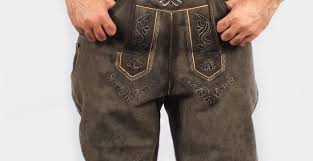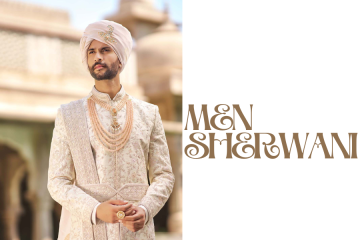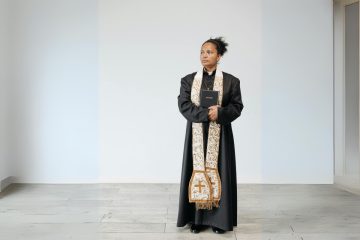Bundhosen, a traditional German attire, has garnered curiosity and interest worldwide. Bundhosen, a quintessential piece of Bavarian attire, embodies centuries of tradition and craftsmanship. These knee-length trousers, often adorned with intricate embroidery and ornate buttons, have roots dating back to the 19th century, where they were originally worn by laborers and peasants in rural Bavaria. Over time, Bundhosen evolved from practical workwear to symbols of cultural identity and pride. Today, they are synonymous with Bavarian festivals such as Oktoberfest, where locals and visitors alike don Bundhosen to celebrate tradition, camaraderie, and the rich heritage of Bavaria. Whether worn for special occasions or as everyday attire, Bundhosen continue to captivate with their timeless charm and enduring legacy.
In this comprehensive guide, we’ll delve into the origins, styles, and significance of German Bundhosen, providing insights for those eager to learn more about this unique garment.
Understanding Bundhosen
Bundhosen traces its roots back to Bavaria, Germany, where it was initially worn by laborers and peasants in the 19th century. Originally designed for practicality and durability, Bundhosen featured a distinctive knee-length design with suspenders and intricate embroidery, reflecting the wearer’s regional heritage and craftsmanship.
The origins of Bundhosen can be traced back to the rural regions of Bavaria, where they served as essential attire for individuals engaged in manual labor. Crafted from durable fabrics such as wool or linen, Bundhosen were designed to withstand the rigors of agricultural work, offering both comfort and protection.
Over the years, Bavarian Bundhosen evolved from simple, utilitarian garments to symbols of regional pride and tradition. The introduction of intricate embroidery and decorative details transformed Bundhosen into works of art, reflecting the craftsmanship and cultural heritage of Bavaria.
Types of Bundhosen
Traditional Bundhosen
Traditional Bundhosen maintains the classic knee-length silhouette with buttoned or lace closures, adorned with elaborate embroidery along the seams and pockets. Crafted from durable fabrics such as wool or linen, these garments are a testament to German lederhosen tradition and craftsmanship.
Modern Bundhosen
Modern interpretations of Bavarian Bundhosen offer a contemporary twist on the traditional design, featuring streamlined silhouettes, alternative fabrics, and updated detailing. While still rooted in tradition, modern Bundhosen cater to diverse tastes and preferences, making them accessible to a broader audience.
Regional Variations
Bundhosen are not confined to one specific style; instead, they vary based on the region of origin and cultural influences. For example, Alpine regions may feature knee-length lederhosen with heavier fabrics and intricate embroidery, while urban areas may opt for sleeker, more minimalist designs.
Significance of Bundhosen in German Culture
Bundhosen holds significant cultural importance in Germany, particularly in Bavaria, where it is often worn during festive occasions such as Oktoberfest and folk festivals. Beyond its aesthetic appeal, Bundhosen symbolizes pride in Bavarian heritage and tradition, serving as a sartorial expression of regional identity and camaraderie.
Festive Attire
During traditional festivals like Oktoberfest, Bundhosen are a common sight, worn by both locals and visitors alike as a nod to Bavarian culture. The vibrant colors and intricate designs of traditional German pants add to the festive atmosphere, creating a sense of unity and celebration.
Everyday Wear
While traditionally associated with special occasions, Bundhosen are also worn as everyday attire by those who embrace Bavarian culture. From attending family gatherings to exploring the countryside, Bundhosen are versatile garments that can be styled for various occasions.
How to Wear Bundhosen
Wearing Bundhosen is more than just putting on a garment; it’s about embracing a cultural tradition and celebrating heritage. Here are some tips for wearing Bundhosen with confidence and style
Choose the Right Fit
Ensure that your Bundhosen fits comfortably around the waist and thighs, allowing for ease of movement without being too tight or restrictive. The suspenders should fit snugly on your shoulders without digging in or slipping off.
Coordinate with Traditional Accessories
Complete your Bundhosen ensemble with traditional accessories such as a checkered shirt, woolen socks, and sturdy boots. Add a decorative belt and a feathered hat for an authentic Bavarian look that pays homage to tradition.
Embrace Embellishments
Embrace the intricate embroidery and decorative details that adorn Bundhosen, as they are an integral part of its aesthetic appeal. Opt for designs that resonate with your personal style while honoring the rich heritage of Bavarian craftsmanship.
Conclusion
In conclusion, Bundhosen encapsulates the essence of Bavarian tradition and culture, serving as both a fashion statement and a symbol of regional pride. Whether worn during festive celebrations or as everyday attire, Bundhosen offer a glimpse into Germany’s rich cultural heritage and timeless craftsmanship.



